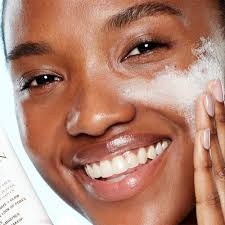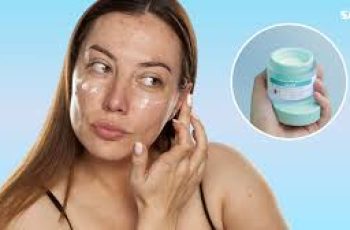
How to Remove Your Makeup: Expert Top Tips to Make Sure Your Face is Completely Clean
In this day and age you may be surprised to see me still talking about how to remove your makeup. I know, you are all dab hands at all this now, but it is remarkable to find that even after using all the correct techniques and products we are still hitting the hay with dirty faces.
But before you run for the hills screaming, I have put together some super easy and quick tips to follow to make sure your face is completely clean and any traces of makeup are long gone.
Tip 1: Let the Products Do the Work
It is tempting to grab your cleanser and mimic sonic the hedgehog when removing your makeup at lightning speed. But you need to take your time when it comes to getting your face squeaky clean and makeup free. By this I mean you need to allow the cleansing products to put in all the leg work and start to dissolve the makeup. I have found about 2 minutes to allow the product to silently work away is optial timing to ensure that makeup is coming off the face and not being left behind on your lovely white pillow cases!
The most simple way of achieving this is to do the following
Wet the face with luke warm water.
Take your makeup remover and apply it all over the face, ensure the remover is safe to use on your eyes.
Now let the product work away, during this time you can brush your teeth to kill two birds with one stone.
Next take a damp flannel and wipe away the product, using warm water gives the flannel an added luxurious, spa like feel and also opens up the pores ensuring they are ready for the next step of your routine.
The final step is up to you and what you prefer, you can move on to serums and moisturisers or you could go in for a double cleanse (more on that coming up!)
This may all sound like a bit of a task, but what you have to remember is makeup removers have been formulated to remover makeup (funnily enough) and does not need you working up a sweat trying to swift the makeup off your face as quickly as possible. The specifically chosen ingredients need the time to break down makeup, like foundation, ready to be removed off the face with a flannel, face cloth or sponge.
Tip 2: Ditch the Makeup Wipes
There’s no disbuting the fact that makeup wipes are easy, handy and get the job done in rapid time! As useful as these wipes are there are a lot more disadvantages to using them too regularly on your skin and aren’t very eco-friendly.
Although using wipes is a good starting point at removing some product, it shouldn’t be the final step of cleansing the skin. Following a quick swipe of a makeup wipe should be followed with a good cleanse, this will work its way down into the pores clearing out any debris and bacteria, not forgetting any excess sebum (the natural oil your skin produces) that will build up if left alone and develop into blemishes, such as spots, whiteheads and blackheads.
Tip 3: Find the Best Cleanser for Your Skin
The main purpose of a cleanser is to “cleanse” the face of any impurities and product. One part of a using a cleanser that is quite often forgotten is to use something that is suitable for your skin type. It’s a simple thing to not really take into consideration but will have a large impact on the overall look and feel of your face.
There are different formulas of makeup removers, balms, creams, lotion and waters. All do the job and it is all dependant on the texture you prefer and your skin type. For example, dry skin types benefit from using balms for the nourishing feel when applying it to the face.
Tip 4: Don’t Use a Face Wash for Removing Makeup
Using a face wash to remove your makeup is a bit like having a shower with your clothes on. There is really no benefit to your skin by using it before removing any foundation and other makeup, if anything you’ll be moving everything around the face without cleaning it away.
By all means continue to use your facewash but after first initially removing makeup with a cleanser first and then washing the face after, industry experts call this the double cleanse technique and is the most effective way of ensuring your skin is left clean and makeup free!
Tip 5: How to Remove Every Bit of Mascara
Mascara, kohl, liquid liner, none of them are going anywhere any time soon, but it’s remarkable to find we still aren’t removing eye makeup properly. Here is how to remove every inch of eye makeup and save your poor bed sheets from those black smudges!
Soak a cotton bud with your makeup remover, Micellar water works well and is gentle for the eyes.
Dab the soaked cotton bud along the lids and lashes allowing enough time for the product to work at dissolving any stubborn mascara
Next take a cotton pad, with a small splash of makeup remover and hold it to your lashes, if you have allowed enough time for the product to work you can then move the cotton pad up in the direction of your lashes taking the mascara residue with it
If you find there is still some mascara or liner etc left behind then repeat the previous steps
As tempted as it may be, plucking clumps of mascara from your lashes will weaken them and result in the them beginning to fall out.
Tip 6: Don’t Forget About Removing Your Makeup from Other Areas of the Face
This only really applies to those of you who apply foundation to other areas of the face, such as the ears and necks in a bid to add uniformity to the overall look. It is these areas that you shouldn’t forget about when cleansing.
Take a flannel and wet it with some tepid water
Wipe over areas such as the neck and ears that you applies foundation, bronzer etc to
Next take the cleanser you used on the face and work the product in using your fingertips
Remove the cleanser with the same flannel until all makeup is removed
Don’t forget about your hairline when cleansing these different areas too as makeup loves to gather there
Tip 7: Don’t Forget the Rest of Your Skincare
You’ve just double cleansed and your skin is feeling super fresh and brand new, I wouldn’t blame you for wanting to keep that feeling for a little longer.
No matter your skin type it is advisable to apply the rest of your skincare as usual. The reason being is that the clean, glowing feeling you have after cleansing changes, oily skin will produce oil and dry skin can remain extremely tight and uncomfortable. To avoid this apply your moisturiser to keep the skin barrier healthy, with the oil and water levels balanced.
So there you have some tips and tricks that industry experts swear by and will result in you sleeping a little more soundly knowing you are free from every inch of makeup!


